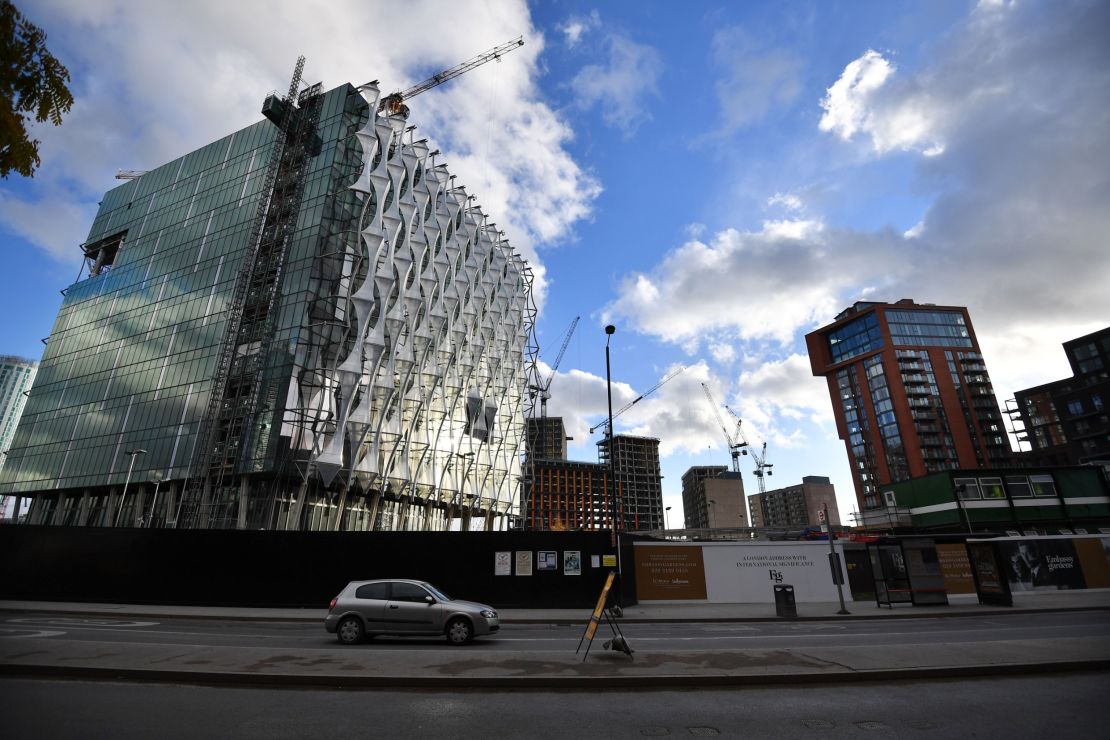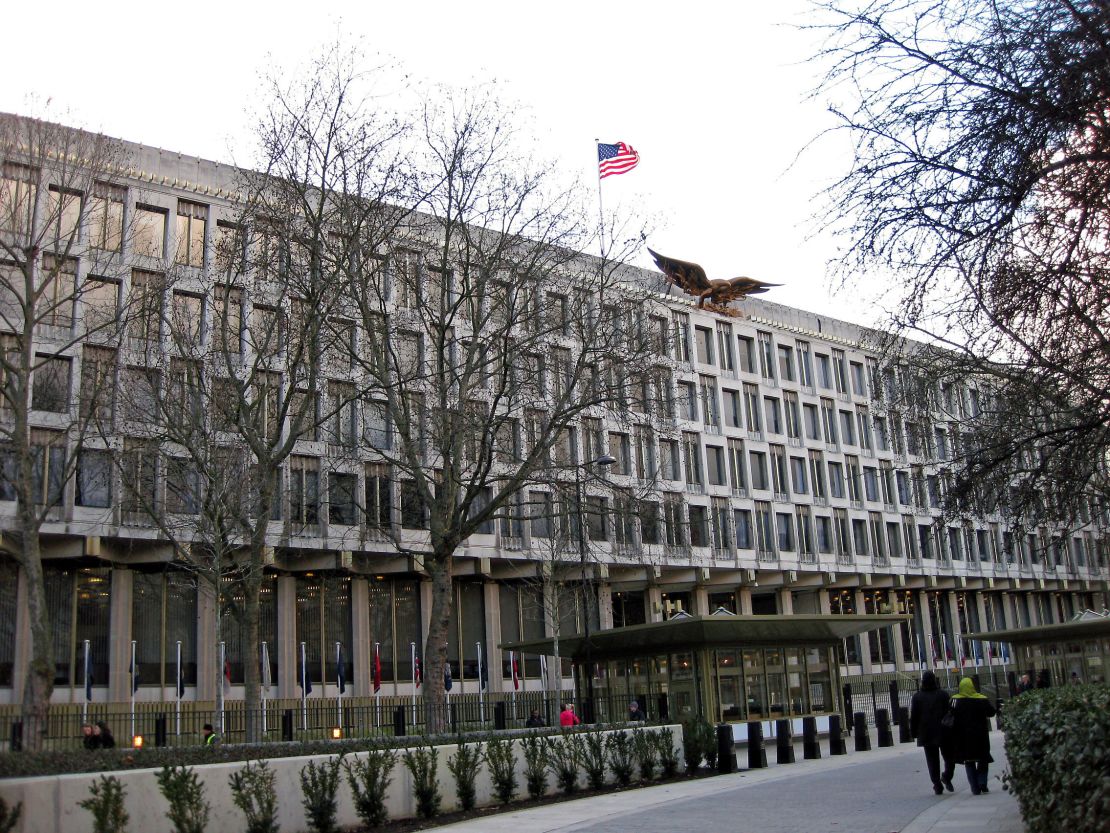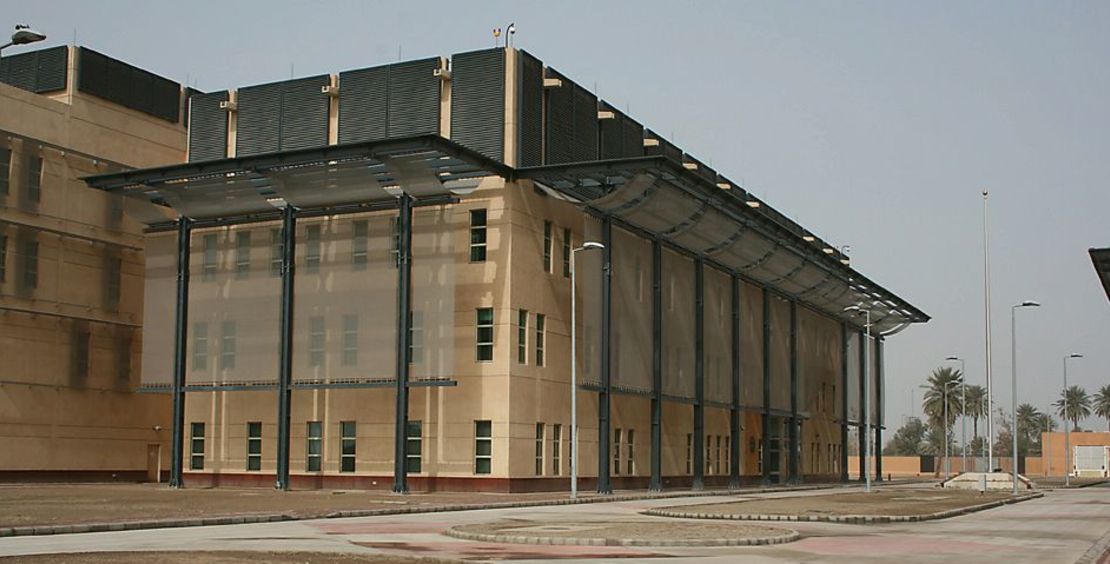Later this year, the new US Embassy in London will open, a giant glass cube on a formerly industrial site south of the River Thames.
The embassy, which cost a record $1 billion, provoked controversy almost from the moment it was announced. Some critics complained the design, by the firm KieranTimberlake of Philadelphia, is too forbidding. (The embassy sits behind a ring of ponds and gardens, essentially a modern moat.)
Members of Congress balked at the price tag. At a hearing in 2015, Rep. Jason Chaffetz, a Utah Republican and chairman of the House oversight committee, slammed the government’s construction process as mismanaged, resulting in a building with an “opulent-looking” glass façade that favors aesthetics over security.
Can a building that meets rigorous security standards also be beautiful, and if so, at what cost? Modern embassy design revolves around this question.
Today’s security requirements are both stringent and complicated. In addition to being constructed of blast-resistant materials, a new American embassy must have a 100-foot setback from the street; a high wall or fence around its perimeter; and anti-ram barriers (to prevent vehicular attacks).
Yet embassies aren’t just meant to shield Foreign Service officers from harm. They are also the face the United States presents to the world. For many people, it’s the first point of contact with its government, and a visual key to American values.
As security measures escalate, reconciling them with a welcoming appearance gets trickier.
A careful balance

Most embassies that are on the boards or under construction now are the fruits of a government program launched in 2011 to elevate design standards. Under this program – initially called Design Excellence, then rechristened Excellence in Diplomatic Facilities – the State Department has hired some of the country’s most celebrated architects. (The London embassy slightly predates the program, but set the precedent for it.)
In April, Thom Mayne, a Californian architect known for his bold form-making, broke ground on a new American embassy compound in Beirut, Lebanon.
Tod Williams and Billie Tsien, the husband-and-wife architects of minimalist galleries like the Phoenix Art Museum and the Barnes Foundation, have designed a new embassy to be built in Mexico City.
Read: Saving China’s abandoned Tulou homes
Brad Cloepfil, architect of Denver’s Clyfford Still Museum, collaborated with the firm Yost Grube Hall Architecture on a nearly finished embassy campus in Maputo, Mozambique.
Jeanne Gang, who reinterpreted the skyscraper with her wavy-sided Aqua Tower in Chicago, was just selected to design a new embassy in Brasilia, Brazil.
Although these architects have won the highest awards of their profession, none has experience with diplomatic facilities.
The architecture it promotes may be avant-garde, but the Excellence program actually looks back 50 or 60 years to a time when the federal government enlisted important Modernist architects, such as Walter Gropius, Marcel Breuer and Edward Durrell Stone, to shape the United States’ image overseas.
The embassy now being replaced in London, for example, was designed by Eero Saarinen, better known for the Gateway Arch in St. Louis.
Read: How tech revolutionizes architecture
Saarinen’s embassy was in Grosvenor Square in central London, integrating US diplomacy into the heart of the city. The building even opened its library to members of the public.

Then came the 1983 bombing of the U.S. embassy in Beirut, with a death toll of 63, and the 1998 terrorist attacks on embassies in Kenya and Tanzania, which killed more than 200 people. Hardening the defenses at embassies and consulates around the world suddenly became a priority.
To that end, in 2002 the State Department adopted the Standard Embassy Design, or SED, a boilerplate model that could be built fast anywhere in the world. It had small, medium, and large options, like a t-shirt.
The result: dozens of new embassies and consulates completed quickly, but lacked individual character. The culmination of the SED was the massive, heavily fortified embassy in Baghdad, finished in 2009.
Read: Design tips from the world’s best-looking schools
The depressing appearance and isolated locations of these embassies did not go unnoticed. Some diplomats said they hampered local relationship-building.
“Our diplomats are engaged in heroic and difficult work every day,” Sen. John Kerry and former Secretary of Defense William Cohen wrote in a 2010 CNN op-ed lamenting “concrete bunker” embassies. “But too often, their buildings – cold concrete at a forbidding distance, hidden away from city life, with little regard for the local surroundings – undermine our diplomats’ message and even their mission.”

The Excellence program was a corrective, an attempt to swing the pendulum back toward thoughtful design.
“Over time, OBO (the State Department’s Bureau of Overseas Buildings Operations) learned what the SED did well, but also that the SED did not always allow (us) to meet the varied needs of the mission of posts or to deploy taxpayers’ dollars in the most cost-effective fashion,” Christine Foushee, a State Department spokesperson, told CNN in an email.
The government now wants embassies to represent the best of American architecture while respecting the culture of the host country. Officials try to place them in more central, urban locations, and to meet environmental targets without sacrificing functionality or security.
However, some feel the pendulum has swung back too far. In addition to faulting the embassies’ costs, critics on Capitol Hill have complained that the time required to custom-design and build this generation of embassies leaves diplomatic staff stuck in old, sub-par facilities for too long.
Read: How Africa’s avant-garde architecture became a symbol of independence
Architectural historian Jane C. Loeffler, an expert on embassy architecture, was critical of the SED, but wonders if buildings that cut a dramatic profile are logical, given the parameters.
“So-called ‘high-design’ makes little sense when such buildings are low-profile structures, and intentionally so,” she says. “Set back behind high perimeter walls, they really can’t be seen well, let alone photographed – which is prohibited.”
But thoughtful design is crucial in other respects, Loeffler says.
“What matters most is a quality workplace, energy efficiency, accessibility, and other factors that comprise (the State Department’s) Excellence agenda.”
New year, new buildings: 2017's most anticipated openings
The State Department holds that tailoring designs doesn’t ultimately cost more than using a template. (The SED embassy in Baghdad was no bargain, at $750 million.)
“In this constrained budget environment, Excellence provides the best value for the American taxpayer,” Foushee says. She adds that new facilities “meet or exceed very rigorous security and life safety standards required by law and by our team of experts and professionals.”
Read: How will Trump’s taste change the White House?
A Government Accountability Office report on the program published in March found that Excellence embassies often have higher upfront costs and longer construction periods, and that the State Department needs to better measure the program’s performance. But the employees interviewed held split or conflicting opinions on whether the past or current approach was more effective.
With a new administration helmed by a president who was previously real estate developer, the policy on embassy design and construction could change again. President Trump has proposed deep cuts to the State Department’s budget.
“As long as security is the number-one priority to this administration – and it appears to be so – it is unlikely that funding for new embassy construction will be cut back,” Loeffler says. But, she adds, funds needed to run and maintain the embassies could be in jeopardy, as well as funds for the kind of soft-power diplomacy that makes an embassy a true outpost of America abroad.
The new cube in London ushers in the first wave of self-consciously architectural embassies since the Cold War. It remains to be seen how successful they will be at their extraordinarily difficult task: holding beauty, security, and cost-efficiency in a careful balance.
































